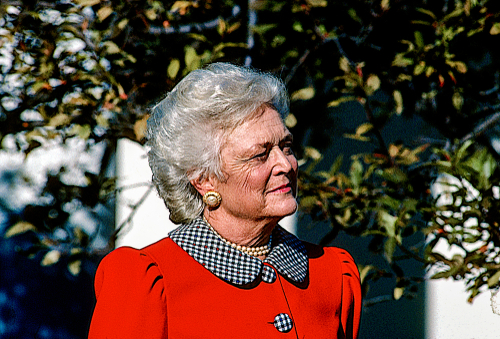
Why Earlier Hospice Is Better
Experts recommend a minimum of three months in hospice.1,2 The unfortunate fact of the matter is that most people receive much less time in hospice than that. Nearly three out of four Americans receive less than the recommended minimum. To correct this shortcoming, it may help if more people know why three months is the recommended minimum. The answer is that hospice has a lot to offer patients and families in terms of pain control, emotional support, personal care, financial savings, quality of life, and more. However, these improvements do not appear overnight. Families need time in hospice for these benefits to accrue. Here, we highlight some of the advantages families enjoy when they have more time in hospice.
More Time in Hospice Means Greater Comfort
As an advanced, terminal disease progresses, managing symptoms such as pain during breathing gets increasingly difficult. In the year leading up to enrolling in hospice, people tend to experience more and more symptom burden. The good news is that hospice tends to roll back a patient’s symptom burden by one year, on average. This does not happen in the first week, though. Patients start realizing better symptom management after the first week and things get better and better for the next 12 weeks. For symptoms to roll back one year, patients typically need to be in hospice for three months.3
Longer Hospice Enrollment Means Better Mental Health
It’s not uncommon for family to experience symptoms of depression after the loss of a very close loved one. In some cases, this can even become major depressive disorder. The longer a family has in hospice, the lower the risk of major depressive disorder.4
- 1 to 3 days in hospice = 24.1%
- 4 to 7 days in hospice = 10%
- 8 to 14 days in hospice = 3%
Longer Hospice Seems to Do More to Lengthen Life
It’s well established that people who enroll in hospice tend to live longer than people who have similar conditions but choose to go without hospice. Hospice is associated with survival extended by days to months. Some of this research even shows that the earlier people choose hospice the longer they tend to live compared to those who don’t choose hospice.5 It’s worth noting, however, that hospice does not directly attempt to extend life. Hospice focuses on palliative care. Longer life seems to be a side effect of palliative care.
More Hospice Means Lower Costs
In the hospice benefit, original Medicare pays 100% of allowable charges for nursing, therapy, aides, equipment, medications, and supplies related to the hospice diagnosis. Patients have no copays and no deductibles. This saves money for families, and these savings grow as families have more time in hospice.
What’s more, Medicare saves money while patients are in hospice, too. Even though patients in hospice tend to live longer, people receiving hospice at home tend to need hospital and ER care less. Despite the fact that Medicare waives deductibles and copays for people in hospice, Medicare saves an average of $9,000 per person when patients choose hospice. Medicare could be saving even more money. The average American spends less than a month in hospice, but when people have hospice for two or three months, savings triple.6
Longer Hospice Reduces Rehospitalizations
Medicare doesn’t like it when patients go home from the hospital and then bounce right back to the hospital within 30 days. Not only does Medicare report this to the public as a negative outcome, they build financial penalties into their payment system for this. Rehospitalizations interfere with a family’s quality of life, especially during end-of-life care. One way hospitals can prevent rehospitalizations is to offer hospice much earlier. Hospice prevents rehospitalizations, and each five additional days of hospice improves readmission rates 3%.7
Three Months of Hospice Increases Satisfaction
When all is said and done, most families report that they did not receive enough time in hospice. Among families who report satisfaction with the length of hospice, the average enrollment was 98 days (a little more than three months).8 People who felt like they did not receive enough time in hospice proved more than twice as likely to be dissatisfied with the level of emotional support and to have concerns about the coordination of care.
In conclusion, research shows that the maximum benefits of hospice start around three months of service. Most Americans receive much less hospice than that, and resultantly, are not getting the full benefit of hospice. Patients should start conversations with doctors about hospice long before its actually needed. That will prepare patients to recognize for themselves when the time is right and help the doctor understand patient preferences ahead of time.
References:
- Teno J, Shu J, Casarett D, et al Timing of referral to hospice and quality of care: Length of stay and bereaved family member’s perceptions of the timing of hospice referral. Journal of Pain and Symptom Management. 2007; 34: 120-125.
- Rickerson E, Harrold J, Kapo J, et al. Timing of hospice referral and families’ perceptions of services. Are earlier hospice referrals better? Journal of the American Geriatric Society.2005; 53: 819-823.
- Cheraghlou S, et al. Restricting symptoms before and after admission to hospice. The American Journal of Medicine. 129: 754.e7 – 754.e15.
- Bradley EH, Prigerson H, Carlson MD, Cherlin E, Johnson-Hurzeler R, Kasl SV. Depression among surviving caregivers: does length of hospice enrollment matter?. American Journal of Psychiatry. 2004 Dec 1;161(12):2257-62.
- Huo J, et al. Survival and cost-effectiveness of hospice care for metastatic melanoma patients. The American Journal of Managed Care. 20 (5): 366-373.
- Taylor D,Ostermann J, et al. What length of hospice use maximizes reduction in medical expenditures near death in the US Medicare program? Social Science & Medicine. 1466-1478.
- Lah S, et al. The association between hospice utilization and performance on publicly reported outcome measures. In A14. Advance Care Planning and Palliative Care: Patients to Policy 2016. American Thoracic Society.
- Schockett E, et al. Late referral to hospice and bereaved family member perception of quality of end-of-life care. J Pain Symptom Manage. 30: 400-407.





